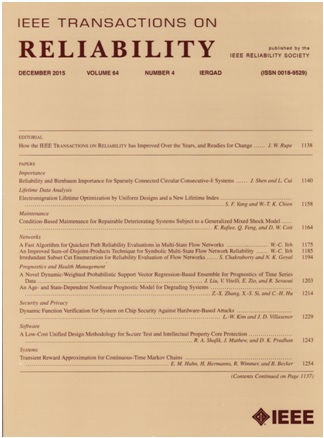新的深度学习方法对故障诊断有效吗?
IF 5.7
2区 计算机科学
Q1 COMPUTER SCIENCE, HARDWARE & ARCHITECTURE
引用次数: 0
摘要
近年来,深度学习已成为机械设备故障诊断的标准方法,模型越来越复杂,规模越来越大。通过对现有文献的全面回顾和分析,我们发现,虽然许多研究报告了最新模型的性能改进,但没有对最先进的(SOTA)方法进行比较。这种差距主要是由两个因素造成的:首先,故障诊断数据的质量和性质差异很大,导致不同数据集的性能出现显著波动;其次,不同的预处理方法使得对模型进行客观比较具有挑战性。例如,虽然深度学习在轴承故障诊断方面具有很高的准确性,但振动信号处理方法的变化往往会影响模型性能的评估。为了解决这些问题并评估用于故障诊断的最新深度学习模型的真实性能,本文建立了一个统一的数据处理框架,以确保模型之间的公平性能比较。使用该框架,我们重现了8个SOTA深度学习模型,并评估了它们在三个公开可用的轴承数据集上的有效性。此外,我们设计了三个基准模型来量化性能差异。实验结果表明,目前基于深度学习的故障诊断方法在实际应用中仍面临重大挑战。最后,对该领域今后的研究方向进行了展望。本文章由计算机程序翻译,如有差异,请以英文原文为准。
Are Novel Deep Learning Methods Effective for Fault Diagnosis?
In recent years, deep learning has become the standard approach for fault diagnosis in mechanical equipment, with models becoming increasingly complex and large in scale. Through a thorough review and analysis of existing literature, we found that while many studies report performance improvements with the latest models, there has been no comparison of state-of-the-art (SOTA) methods. This gap is primarily due to two factors: first, the wide variation in the quality and nature of fault diagnosis data leads to significant performance fluctuations across different datasets; second, the diverse preprocessing methods employed make it challenging to compare models objectively. For instance, while deep learning has demonstrated high accuracy in bearing fault diagnosis, variations in vibration signal processing methods often skew the evaluation of model performance. To address these issues and evaluate the true performance of the latest deep learning models for fault diagnosis, this article establishes a unified data processing framework that ensures fair performance comparisons across models. Using this framework, we reproduce eight SOTA deep learning models and assess their effectiveness on three publicly available bearing datasets. Additionally, we design three benchmark models to quantify performance differences. The experimental results highlight that current deep learning-based fault diagnosis methods still face significant challenges in real-world applications. Finally, the future research directions in this domain are given.
求助全文
通过发布文献求助,成功后即可免费获取论文全文。
去求助
来源期刊

IEEE Transactions on Reliability
工程技术-工程:电子与电气
CiteScore
12.20
自引率
8.50%
发文量
153
审稿时长
7.5 months
期刊介绍:
IEEE Transactions on Reliability is a refereed journal for the reliability and allied disciplines including, but not limited to, maintainability, physics of failure, life testing, prognostics, design and manufacture for reliability, reliability for systems of systems, network availability, mission success, warranty, safety, and various measures of effectiveness. Topics eligible for publication range from hardware to software, from materials to systems, from consumer and industrial devices to manufacturing plants, from individual items to networks, from techniques for making things better to ways of predicting and measuring behavior in the field. As an engineering subject that supports new and existing technologies, we constantly expand into new areas of the assurance sciences.
 求助内容:
求助内容: 应助结果提醒方式:
应助结果提醒方式:


